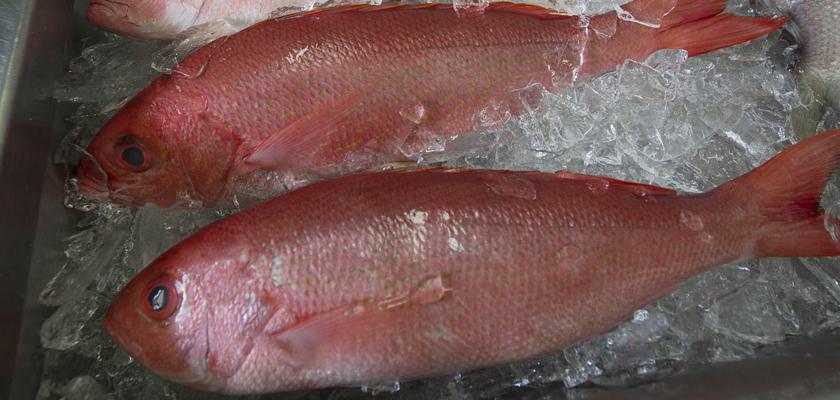Alabama state waters and federal waters will open to private and state-licensed charter vessel anglers for red snapper harvest on May 26, albeit with a much lower harvest quota due to the feds, according to the Alabama Department of Conservation and Natural Resources (DCNR).
The season will consist of four-day weekends, Friday through Monday, beginning Friday, May 26, and continue until the private angler quota is projected to be met. The season dates listed above only apply to anglers fishing from shore, private recreational vessels and state-licensed Alabama commercial party boats that do not hold federal for-hire fishing permits. NOAA Fisheries will announce the season for anglers fishing from federally-permitted for-hire vessels at a future date.
The Alabama private angler quota for 2023 was set by National Oceanic and Atmospheric Administration (NOAA) Fisheries at 558,200 pounds due to changes by NOAA Fisheries concerning the difference between state and federal harvest landing systems. There is an anticipated increase to 591,185 pounds during the season as a result of a rise in the Annual Catch Limit (ACL) for Gulf Red Snapper that is in the rulemaking process at NOAA Fisheries. MRD will announce a season closure date when the 2023 quota is anticipated to be met.
For comparison, Alabama's red snapper recreational angler harvest in 2022 was 1,122,662 pounds allowed. Scott Bannon, Director of DCNR's Marine Resources Division, told Sport Fishing Magazine in December that the quota reduction by NOAA stems from the differences in red snapper harvest estimates between the federal government and Alabama's red snapper data compilation.
"Each Gulf state is accounting for their recreational harvests using different data programs from what the federal government is using," Bannon told the outlet. "Under the rule that created state management of red snapper in 2018, there was a requirement to align the landings into the same calibration method. Alabama and Mississippi have very accurate reporting systems, and we feel the harvest estimates from NOAA are inflated and unreasonable."
DCNR officials said in December that anglers had harvested less than half of Alabama's 2022 quota of 1.12 million pounds, but that was "primarily the result of less than half of the number of angler trips taken in 2021 have been taken in 2022."
DCNR Commissioner Chris Blankenship said in a statement yesterday that "even with the changes in the Alabama quota, we anticipate having a great red snapper season in 2023."
"The 2022 season lasted until the end of the year with landings similar to the quota we received this year," Blankenship said. "We are still pursuing other options to increase the quota. Anglers should have ample opportunities to enjoy our great red snapper resources off the Alabama coast."
U.S. Sen. Katie Britt (R-Montgomery) said recently that the "State of Alabama is best positioned to responsibly manage our own reef fisheries, including red snapper."
"The Administration's disastrous one-size-fits-all rule is not based on factual information, and it would devastate Alabama's recreational fishing industry – which is a key economic driver for local communities and families along our Gulf Coast," Britt said.
U.S. Sen. Tommy Tuberville (R-Auburn) said in early March that "once again, the Biden administration is trying to force its one-size-fits-all approach and ignore the adverse effects of its decisions."
"Red snapper fishing is a huge part of Alabama's Gulf Coast economy, which is why I'll continue pushing back against the Department of Commerce's disastrous proposal to decrease limits for red snapper anglers based on inaccurate data," Tuberville said.
To connect with the author of this story or to comment, email caleb.taylor@1819News.com.
Don't miss out! Subscribe to our newsletter and get our top stories every weekday morning.









